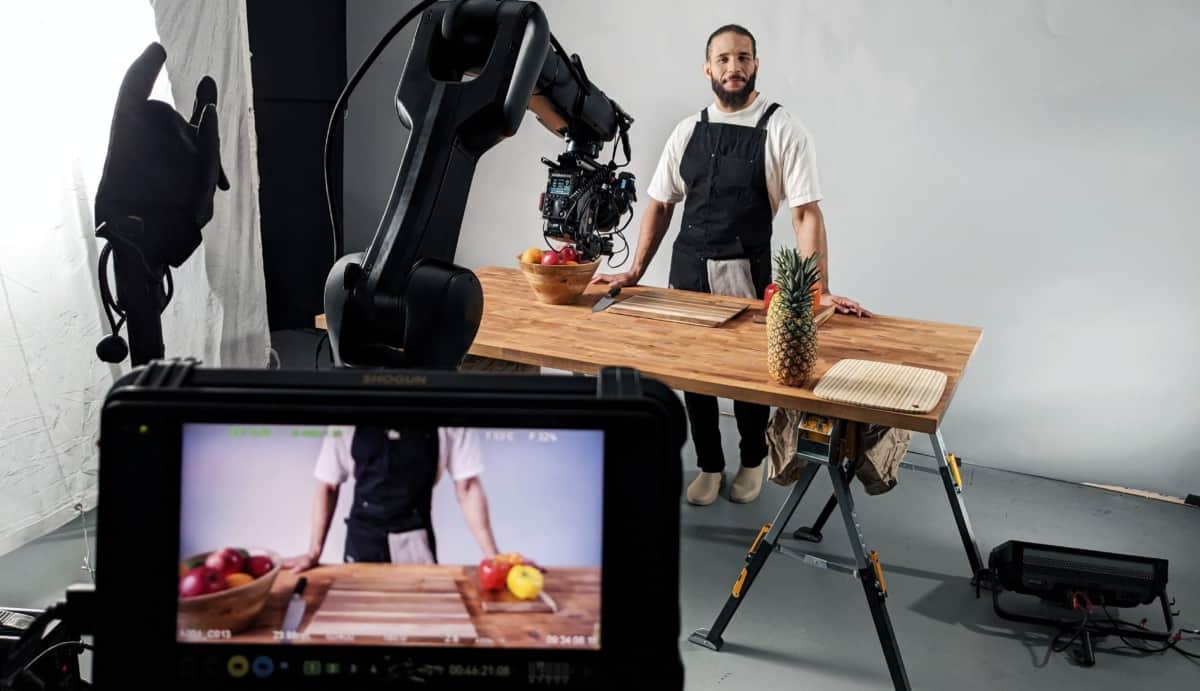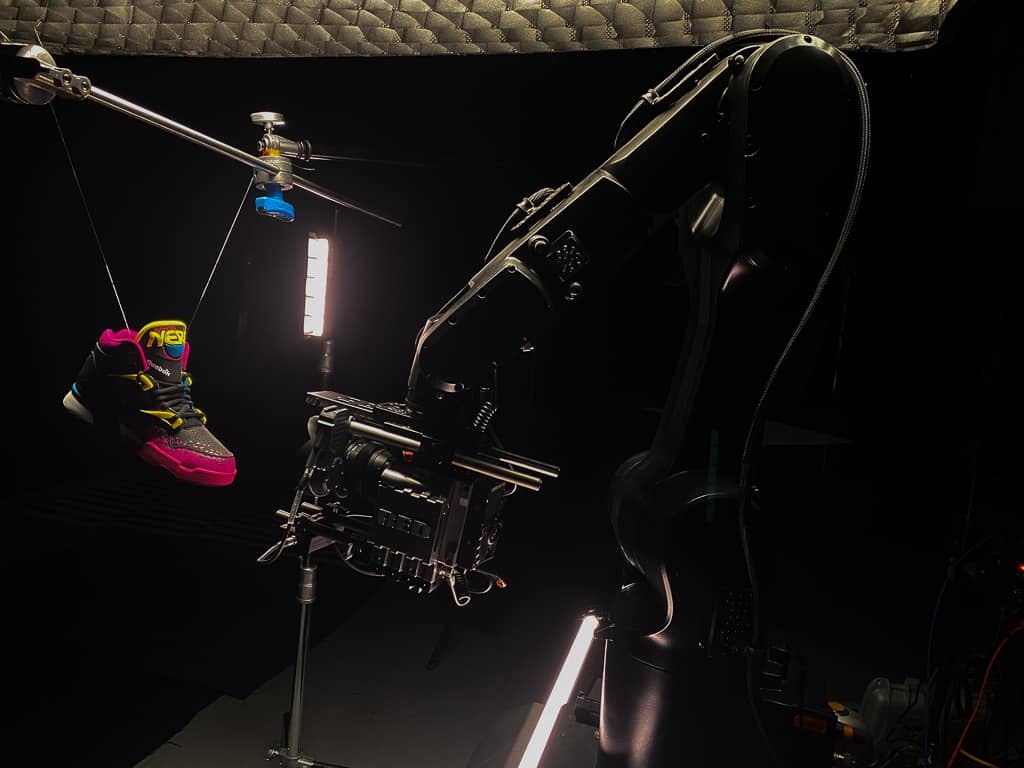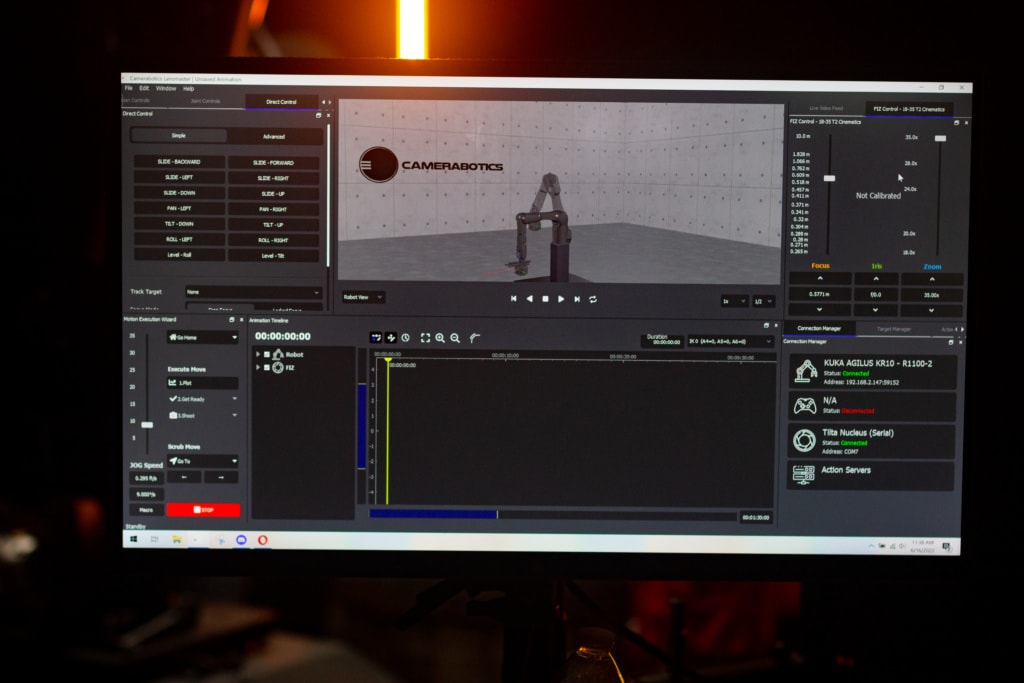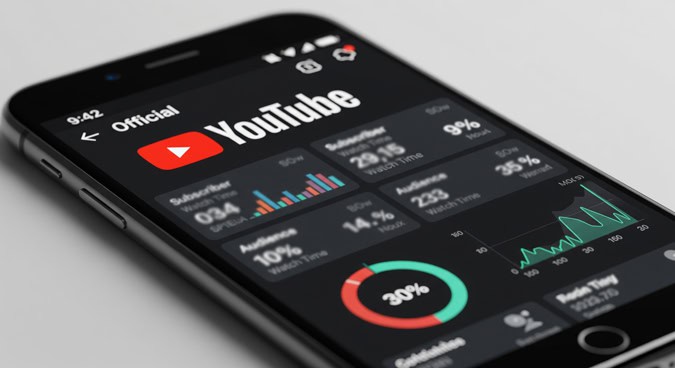
If you’ve seen Kendrick Lamar’s music video, “Humble,” you’ve already seen the gravity-defying, hyper-precise work that cinema robots can produce. We have our own cinema robots, which we use to get shots that would otherwise be impossible.
Cinema robots are robots designed for automation and built so that you can mount any camera to them. If you’ve ever seen the robots designed to build cars, it’s the same sort of robot, just modified for filmmaking.
“Humble” first made cinema robots popular with the public.
“It was one of the first shots consumers saw and were like, ‘How did they do it?’ There’s no other way to get a shot like that with such precision,” said Ari Morales, our studio director, visual engineer/motion control operator, and resident robot pro.
The benefits of using cinematic robots
The benefits of using a cinema robot for filming are immense. Namely, they allow incredibly accurate repeatability, stability, precision down to one-thousandth of an inch, and high speed up to 13 miles per hour. Our cinema robots are also portable enough to fit through doorways.
Additionally, because you don’t need to transition from a camera on a tripod to a slider and back, a cinema robot can save hours on set, and you don’t need as big of a crew.
“Something that may take you a couple days, you could do in an afternoon,” Morales said.
For example, if you had 10 different shoes and wanted to get 10 identical shots of each, all you would have to do is program the robot, then switch out the shoe, and you’ll get the exact same shot for each one.

This makes the robots ideal for product shots—like the shoes—and anything high-tech. When featuring high-tech products, you want the shots to be as clean and precise as possible—devoid of human error. Cinema robots allow you to achieve that hyper-precise, cutting-edge look that you may not be able to get by operating a camera by hand.
The Software Makes the difference
What truly sets cinema robots apart is the software. We use Lensmaster by Camerabotics, which is specifically catered to filmmakers. The interface is timeline-based, similar to Adobe After Effects or Premiere Pro, so we can be highly accurate with how fast things move, where they go, and at what time.

Our primary robot was made by KUKA out of Germany and it sits on a custom platform. We use FIZ focus motors from Tilta, which integrate into the hardware and software.
“It’s everything,” Morales said. “It’s like having the best tripod in the world. You can put your camera in any position in a matter of seconds and get shots you otherwise just couldn’t get. It’s also a good slider, better than a gimbal.
“It’s everything. It’s like having the best tripod in the world. You can put your camera in any position in a matter of seconds and get shots you otherwise just couldn’t get.”
-Studio Director Ari Morales
“It can be your tripod, your slider, your gimbal—it can be anything you want it to be in terms of camera movement.”
Additionally, we have a second robot by Tormach that Morales is beta testing for cinema use. It will be their first automation robot, and Morales is helping them design the cinema aspect of it.
We used cinema robots for our Siete Family Foods, Profound Commerce, Glenfarclas Whisky, Nerf x Reebok, and Mush Oats shoots. We’re excited to continue using them to push our limits and achieve a level of quality that would have been unattainable otherwise.
Have an ambitious video project that may benefit from cinema robots? Reach out to us at [email protected].







